Holocaust Memorial
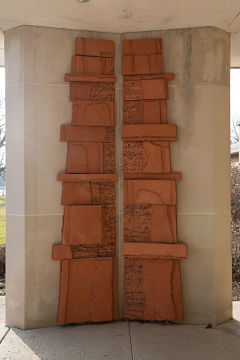 The Holocaust Memorial sculpture in front of the Temple by Artist Nancy McCroskey seeks to communicate the horror of the Holocaust, the endurance of the Jewish people, and the need to remember.
The Holocaust Memorial sculpture in front of the Temple by Artist Nancy McCroskey seeks to communicate the horror of the Holocaust, the endurance of the Jewish people, and the need to remember.
The memorial, in the form of a wall, was inspired by photographs of old synagogues and the Western Wall in Jerusalem. It suggests an account of the historical persecution of the Jewish people throughout the ages. The need to remember the past, which is a central value of Judaism, is reflected in the Hebrew word zachor (remember), which is worked into the clay.
The wall is in the form of two trapezoidal masses giving a feeling of growth and stability. These masses unite around an interior space representing the union of spirit and matter. There are demarcations signifying the 12 tribes of Israel. The handprints against barbed wire are those of Temple members and their children – linking them to past generaitons. The handprints express the anguish and suffering of the martyred millions, yet seem to reach out to us in hope.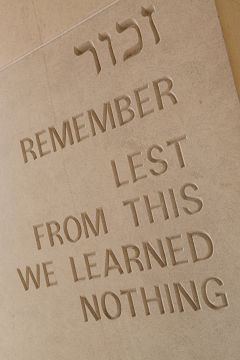 The names of the victims of the Holocaust who were related to members of the Fort Wayne Jewish community are inscribed on both sides of the memorial. Also inscribed is “Those who had the courage to care,” along with the name of Raoul Wallenberg, the Swedish diplomat who saved thousands of Hungarian Jews and whose fate is unknown. Find out more about artwork at the Temple.
The names of the victims of the Holocaust who were related to members of the Fort Wayne Jewish community are inscribed on both sides of the memorial. Also inscribed is “Those who had the courage to care,” along with the name of Raoul Wallenberg, the Swedish diplomat who saved thousands of Hungarian Jews and whose fate is unknown. Find out more about artwork at the Temple.
Learn about our Holocaust Torah scroll on display in the Madge Rothschild Resource Center.
Holocaust Torah
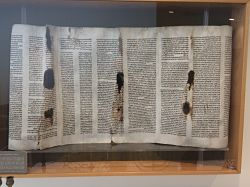 Restoring A Torah Rescued From The Holocaust
Restoring A Torah Rescued From The Holocaust![]()
![]()
 Congregation Achduth Vesholom celebrated its 150th anniversary in October 1998 with the theme “L’dor Vador – From Generation to Generation.” The Temple launched a Torah-writing project in late 1997 to restore a holy document saved from Nazi destruction in Czechoslovakia.
Congregation Achduth Vesholom celebrated its 150th anniversary in October 1998 with the theme “L’dor Vador – From Generation to Generation.” The Temple launched a Torah-writing project in late 1997 to restore a holy document saved from Nazi destruction in Czechoslovakia.
What is the Memorial Scrolls Trust?
The Memorial Scrolls Trust is an organization that preserved 1,564 sacred scrolls that came from Czechoslovakia after the Shoah. The trust’s mission is to give each scroll to a synagogue across the world, and then get those entrusted with them to “be aware” of what they have, to fully understand the legacy they were granted with. These scrolls survived due to three “miracles,” according to the Memorial Scrolls Trust.
The Temple’s Holocaust Memorial Committee secured on permanent loan Scroll #1172 from the Memorial Scrolls Trust housed in Westminster Synagogue of London, England. A remnant of the Torah is on display in the Temple’s Madge Rothschild Resource Center.
We regularly read from the restored Torah, which can be distinguished from our other scrolls in the Ark because it has a Torah cover with the Hebrew word “Zachor,” which means “Remember.”
Each Memorial Scroll is a memory of the past and a messenger for the future.
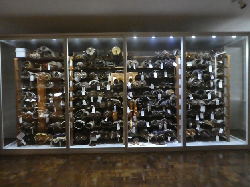 Miracle 1 – The Scrolls Survived WWII
Miracle 1 – The Scrolls Survived WWII
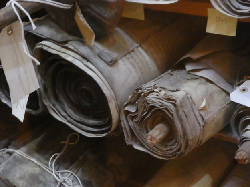
Miracle 2 – Rescued from the communists
In 1948, three years after the war ended, the communists took over. From the artifacts’ point of view, they were even worse than the Nazis. They closed all of the synagogues, churches, and the museum, and took the silver & precious metals from the Museum.
In the 1960s, the economy got bad for the communists. With the help of an American art dealer collecting behind the Iron Curtain, an agreement was brokered to buy the scrolls for £30,000, which is over a million dollars today. 1,564 scrolls were delivered to the newly founded Scrolls Trust in England. They had nine Orthodox soferim review the scrolls. They found that 10% of them were kosher, and those scrolls were sent out to orthodox synagogues for use.
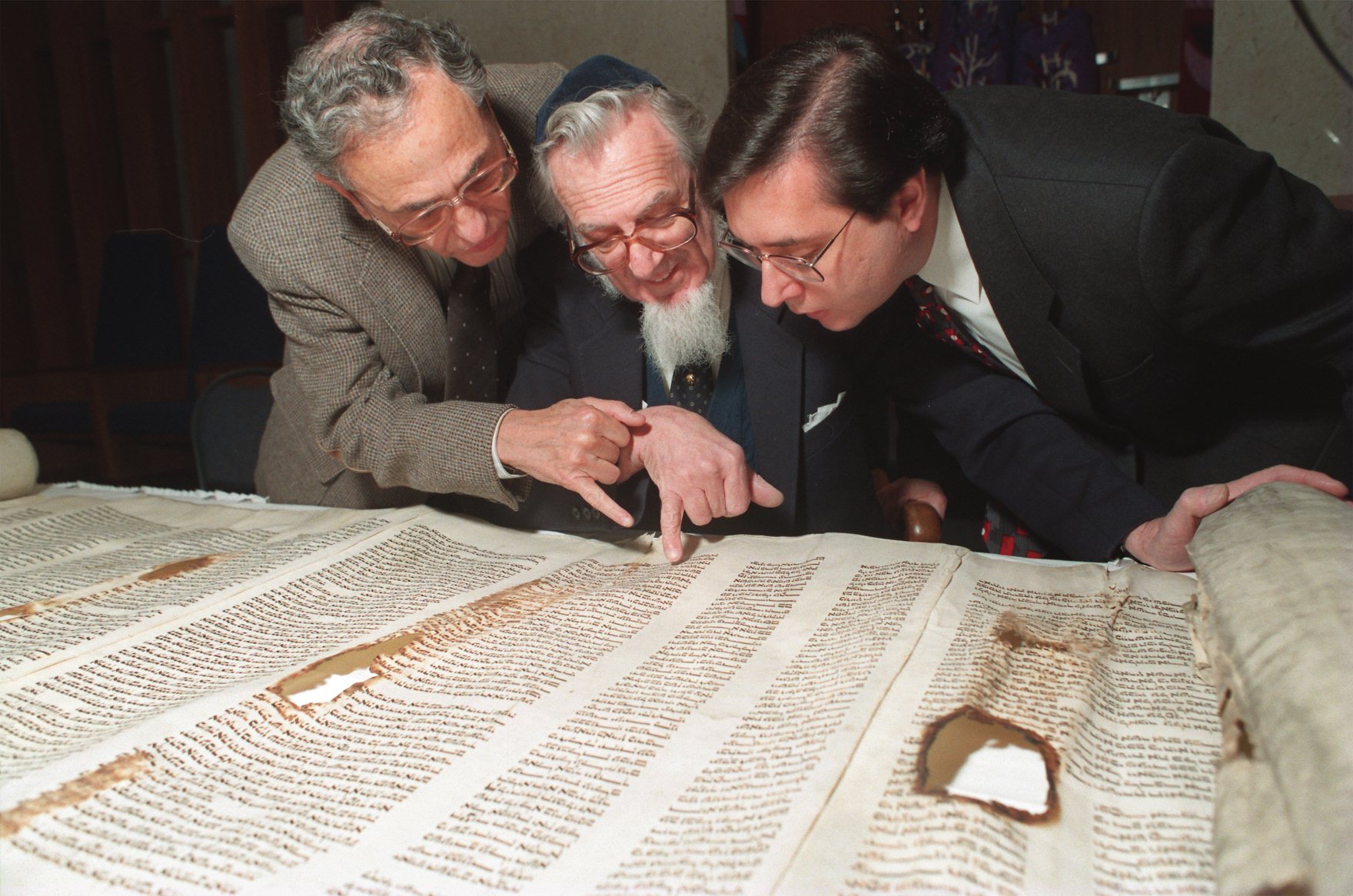
David Brand, a traveling sofer, knocked on the door of the Memorial Scrolls trust one day, asking (in Yiddish) if they had any scrolls needing repairs. “Yes,” he was told, “we have 1564. Come in!” He ended up repairing them for 27 years. Many of the people working in the scrolls trust were liberal or secular Jews, whereas he was very Orthodox – eating his own kosher food and not shaking the hands of women. When someone asked him how he felt working in a mixed Jewish environment, he responded “I was doing God’s work.”
Our Torah came to us with the last half of Numbers and first half of Deuteronomy intact. Master Sofer Dr. Eric Ray came to Fort Wayne and began writing the opening sections of Genesis and explained the intricate process of Torah writing. He then continued working on the Torah sections in New York and Israel for nearly a year to incorporate new sections with the old ones. He returned to Indiana to finish the final sections of the Scroll in time for Simchat Torah and the 150th anniversary gala. Temple member Bill Brosler, who died at age 101 in January 1998 after serving as the Temple’s chief usher for 50 years, underwrote the cost of the restoration effort so that donations for the project could boost the Temple’s Endowment for the future.
